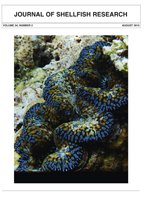Globally, 85% of shellfish reefs have been lost during the past century. The severe loss of the eastern oyster Crassostrea virginica has encouraged different types of restoration efforts in the United States. In Mosquito Lagoon (ML), a shallow-water estuary on the east coast of central Florida, restoration focuses on providing additional substrate for larval recruitment via deployment of stabilized oyster shell. To assess the current number and area of natural, dead, and restored oyster reefs within ML, aerial photographs from 2009 were digitized using ArcGIS software. All reefs were screen digitized using a reef “signature” to estimate the surface area of each reef type. The maps from 2009 were then used as a guide to digitizing the historical aerial photographs (1943, 1951, 1967, 1971, 1984, 1995, and 2006). Oyster habitat within ML has decreased by almost 15 hectares between 1943 and 2009, which constitutes 24%of the 1943 lagoon-wide coverage. The impacts were greater in Canaveral National Seashore,which covers the southernML; 40%of the oyster coverage within the park has been lost since 1943. Dead reefs were found adjacent to important boating channels. Tracked dead reefs exhibited a continuous migration into the mangrove islands located landward of the original live reefs, with some dead reefs completely washing up into the marsh. Restoration of dead reefs with stabilized oyster shells has added nearly 1 hectare of live oyster habitat toML as of January 2009. This research demonstrates that dead reefs are increasing in number and coverage within ML, but this trend can be reversed with restoration.
How to translate text using browser tools
1 August 2015
Formation, Movement, and Restoration of Dead Intertidal Oyster Reefs in Canaveral National Seashore and Mosquito Lagoon, Florida
Stephanie K. Garvis,
Paul E. Sacks,
Linda J. Walters
ACCESS THE FULL ARTICLE

Journal of Shellfish Research
Vol. 34 • No. 2
August 2015
Vol. 34 • No. 2
August 2015
aerial photography
Crassostrea virginica
eastern oyster
estuary
geospatial analysis
National Park Service
remote sensing




